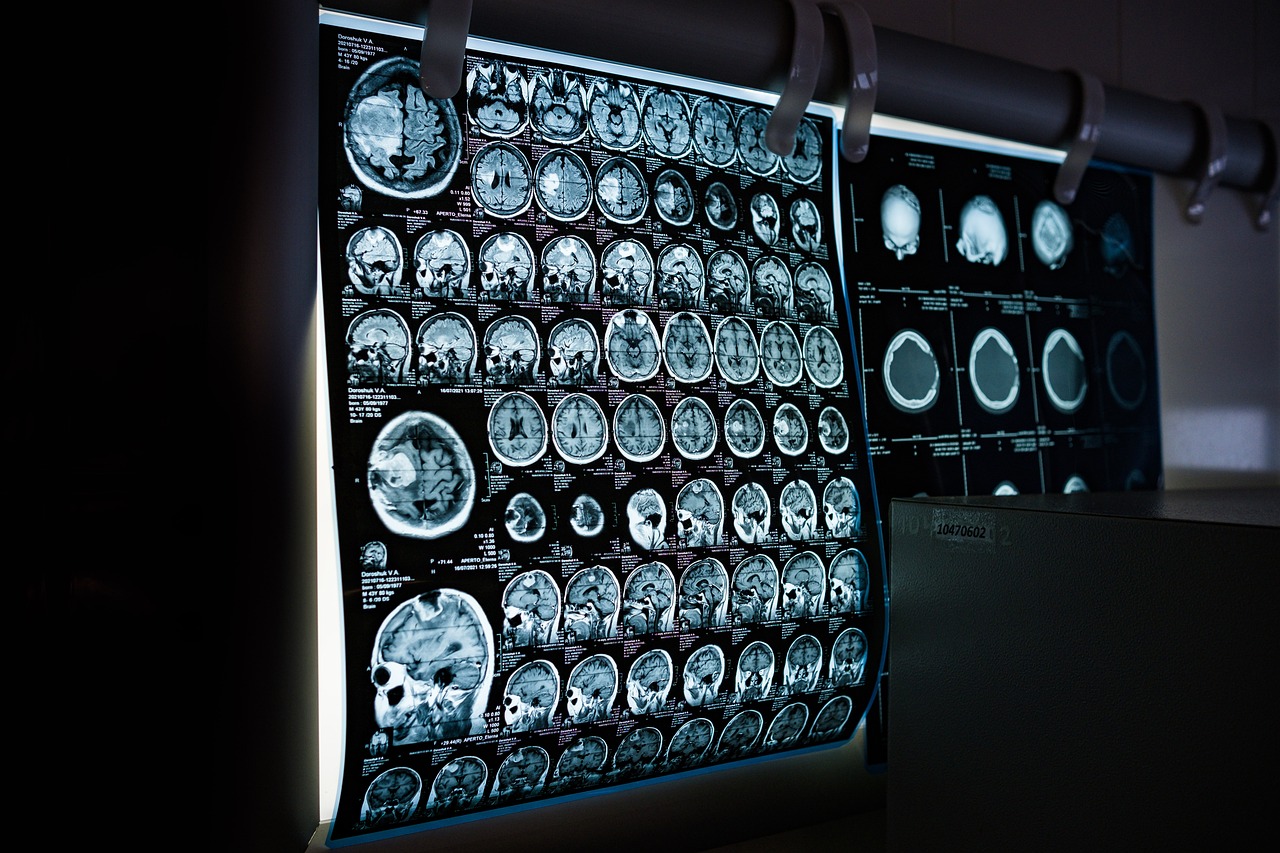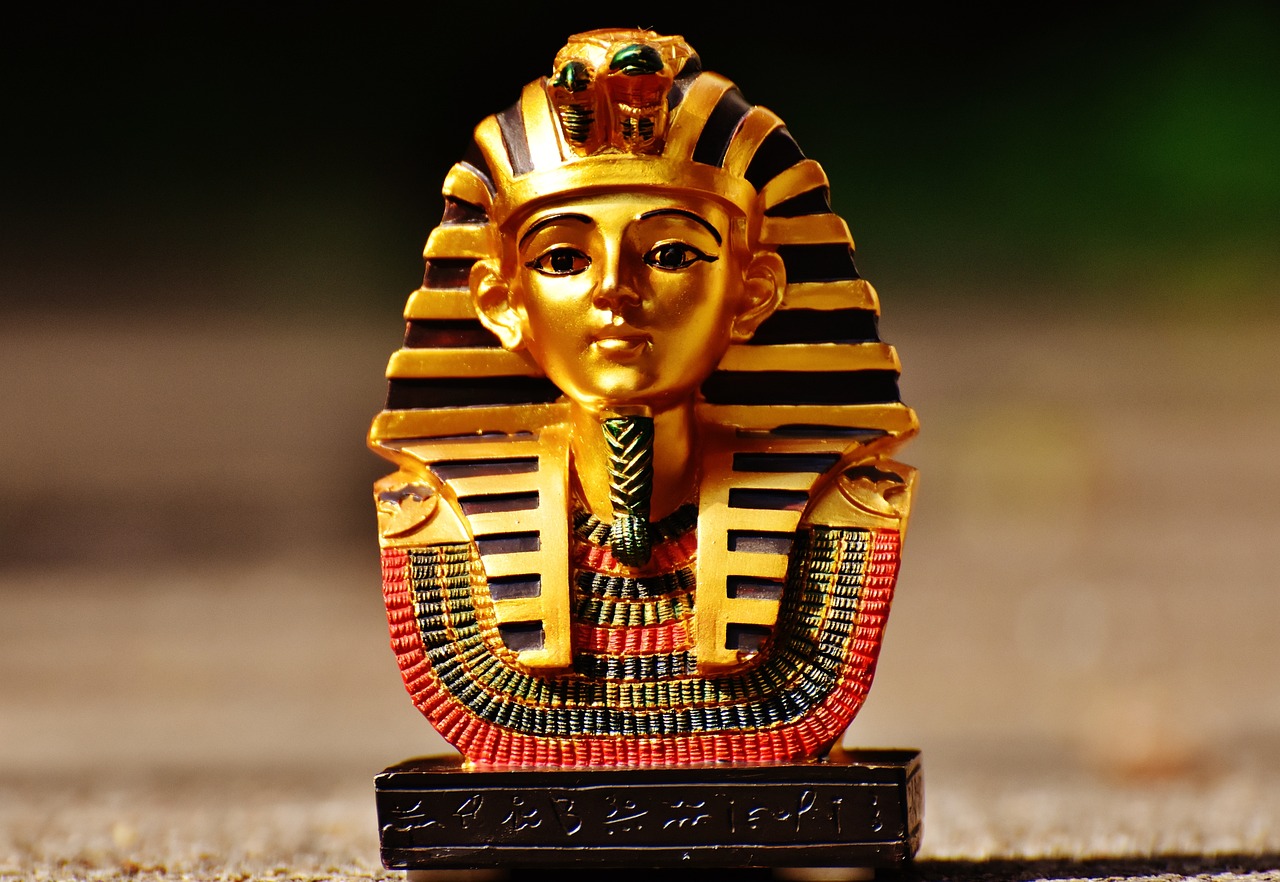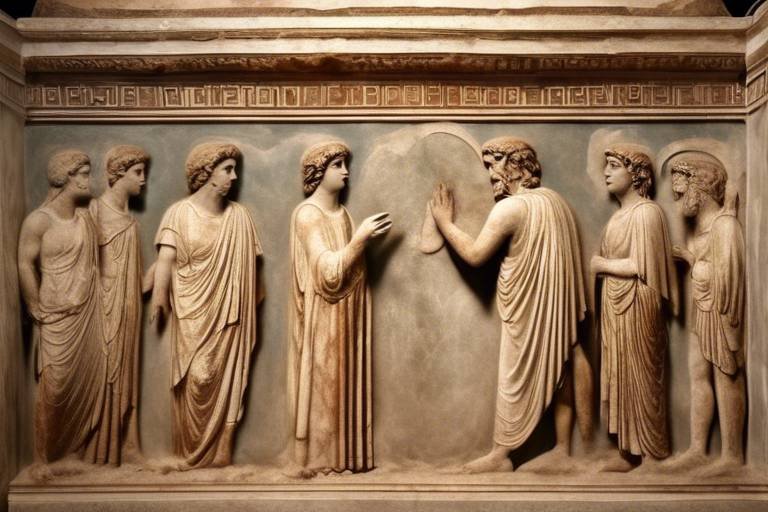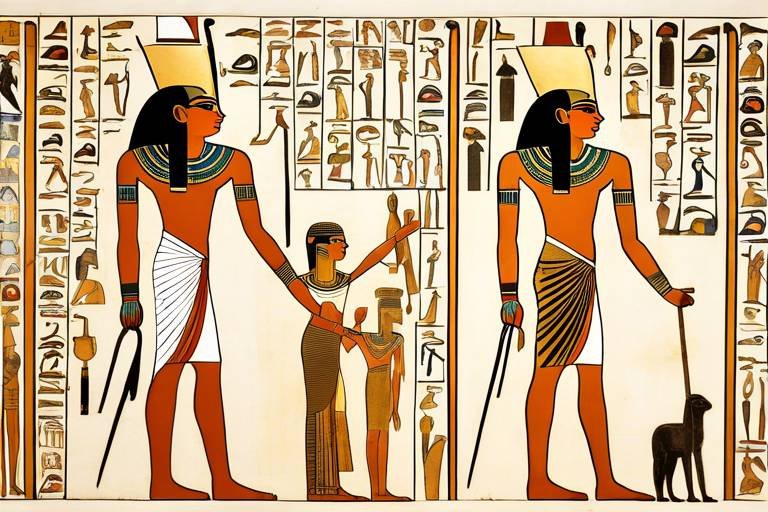The Secrets of Ancient Egyptian Medical Texts
Exploring the fascinating world of ancient Egyptian medical texts and their significance in understanding the healthcare practices of this ancient civilization.
Ancient Egyptian medical texts hold within them the secrets of a civilization that revered the art of healing. These texts, inscribed on papyrus scrolls and found in tombs and temples, offer a glimpse into the medical knowledge and practices of a bygone era. Imagine the dusty corridors of ancient structures, where these scrolls were carefully preserved, waiting for the curious eyes of modern scholars to unravel their mysteries.
One of the most renowned medical papyri is the Edwin Smith Papyrus, dating back to around 1600 BCE. This ancient document details surgical procedures, anatomical observations, and case studies, showcasing the advanced medical knowledge possessed by ancient Egyptian healers. The Ebers Papyrus is another significant text, containing remedies for various ailments and magical spells for protection against diseases.
Ancient Egyptian healers were skilled practitioners who utilized a combination of surgical techniques, herbal remedies, and incantations to treat illnesses and injuries. Surgical procedures such as trepanation, the practice of drilling holes in the skull, were performed with remarkable precision. Herbal medicine played a crucial role in their healing practices, with plants like aloe vera and garlic being used for their medicinal properties.
The ancient Egyptians believed in the power of deities such as Imhotep, the god of medicine and healing. Imhotep, a revered physician and architect, was deified for his contributions to medicine and revered as a divine healer. The influence of these medical deities permeated every aspect of ancient Egyptian healthcare, shaping the beliefs and practices of healers.
Medical knowledge was passed down through generations in ancient Egypt through a combination of oral tradition, apprenticeships, and written texts. The legacy of ancient Egyptian medicine continues to resonate in modern healthcare practices, with elements of their surgical techniques and herbal remedies finding their way into contemporary medicine and alternative healing modalities.
As we delve into the ancient Egyptian medical texts, we uncover a world where science and spirituality intertwined to provide holistic care for the body and soul. The secrets contained within these texts offer a window into a civilization that valued the art of healing above all else, leaving a lasting legacy that continues to inspire and intrigue us to this day.

Medical Papyri
Medical papyri are invaluable sources of information that provide a glimpse into the medical practices of ancient Egypt. These ancient texts, written on papyrus scrolls, have been discovered in tombs and temples, offering insights into the sophisticated healthcare system of this ancient civilization. The medical papyri cover a wide range of topics, including anatomy, diseases, treatments, and prescriptions, revealing the depth of knowledge possessed by ancient Egyptian healers.
One of the most famous medical papyri is the Edwin Smith Papyrus, dating back to around 1600 BCE. This ancient document contains detailed descriptions of various surgical cases, demonstrating the advanced medical knowledge of ancient Egyptian physicians. From diagnosing injuries to prescribing treatments, the medical papyri provide a comprehensive view of the medical expertise of the time.
Another significant papyrus is the Ebers Papyrus, a medical treatise dating back to the 16th century BCE. This extensive document covers a wide range of medical conditions and treatments, showcasing the use of herbal remedies, incantations, and surgical techniques in ancient Egyptian medicine. The Ebers Papyrus is a treasure trove of information that highlights the holistic approach to healthcare practiced by ancient Egyptian healers.
These medical papyri not only offer insights into the medical practices of ancient Egypt but also shed light on the cultural and religious beliefs surrounding health and healing. The meticulous record-keeping and detailed observations found in these ancient texts reflect the systematic approach taken by ancient Egyptian physicians in treating illnesses and injuries.

Medical Practices
Exploring the fascinating world of ancient Egyptian medical texts and their significance in understanding the healthcare practices of this ancient civilization.
Discovering the various medical papyri that have been found in ancient Egyptian tombs and temples, shedding light on the medical knowledge of the time.
When delving into the medical practices of ancient Egypt, one is transported to a realm where surgical techniques, herbal remedies, and mystical incantations intertwined to form a holistic approach to healing. The healers of ancient Egypt were not only skilled in physical treatments but also believed in the power of magical rituals to cure illnesses and injuries.
The ancient Egyptian physicians were pioneers in surgical procedures, with evidence of practices such as trepanation, the process of drilling holes into the skull, and advanced wound treatment methods. Their expertise in surgery highlights the advanced medical knowledge possessed by this ancient civilization.
Plants and herbs played a crucial role in ancient Egyptian medicine, with a wide array of botanical remedies used to treat various ailments and promote healing. The extensive knowledge of herbal medicine showcased the deep connection ancient Egyptians had with nature and its healing properties.
Ancient Egyptian medicine was intertwined with spirituality, as gods and goddesses were invoked for healing and protection. The belief in divine intervention in healthcare practices reflects the sacred nature of healing in the ancient Egyptian culture.
Imhotep, the revered ancient Egyptian physician and architect, was deified as the god of medicine and healing. His legacy continues to inspire reverence and admiration for his contributions to the field of medicine in ancient times.
The transmission of medical knowledge in ancient Egypt was a blend of oral tradition, apprenticeships, and written texts. The passing down of healing practices through generations ensured the preservation of medical wisdom that continues to intrigue and influence modern healthcare.
Ancient Egyptian medical practices and beliefs have left an indelible mark on modern healthcare and alternative medicine. The holistic approach to healing, incorporating physical, spiritual, and natural elements, continues to resonate in contemporary medical practices.
Stay tuned for answers to common queries about ancient Egyptian medical texts, practices, and their impact on modern healthcare.

Surgical Techniques
Exploring the fascinating world of ancient Egyptian medical texts and their significance in understanding the healthcare practices of this ancient civilization.
Discovering the various medical papyri that have been found in ancient Egyptian tombs and temples, shedding light on the medical knowledge of the time.
Exploring the surgical techniques, herbal remedies, and magical incantations used by ancient Egyptian healers to treat various illnesses and injuries.
Ancient Egyptian physicians were skilled in performing advanced surgical procedures that were ahead of their time. One notable technique was trepanation, a surgical procedure involving drilling a hole into the skull to treat head injuries or relieve pressure on the brain. Additionally, they had effective wound treatment methods that involved the use of bandages, stitches, and herbal ointments to promote healing.
Ancient Egyptian medicine heavily relied on the use of plants and herbs for treating a wide range of ailments. They believed in the healing properties of various plants such as aloe vera, garlic, and frankincense. These herbal remedies were often combined with magical incantations to enhance their effectiveness in curing illnesses.
Understanding the role of gods and goddesses in ancient Egyptian medicine was crucial. Deities like Imhotep, the god of medicine and healing, were invoked for their healing powers and protection during medical procedures. The ancient Egyptians believed that these deities guided the physicians in their treatments and ensured successful outcomes.
Imhotep, a prominent figure in ancient Egyptian history, was not only a skilled physician but also an accomplished architect and high priest. Revered for his wisdom and healing abilities, Imhotep was later deified as the god of medicine. His legacy continues to inspire medical practitioners and architects alike, symbolizing the blend of science and art in ancient Egyptian culture.
Investigating how medical knowledge was passed down in ancient Egypt reveals a combination of oral tradition, apprenticeships, and written texts. Experienced physicians passed on their expertise to younger generations through hands-on training and the sharing of medical texts. This ensured the continuity of medical practices and the preservation of valuable healthcare knowledge.
The influence of ancient Egyptian medical practices and beliefs can still be seen in modern healthcare and alternative medicine. Concepts such as holistic healing, the use of herbal remedies, and the importance of spirituality in healing have roots in ancient Egyptian medical traditions. By studying the medical practices of the past, we can gain insights that continue to shape contemporary healthcare approaches.
Stay tuned for the frequently asked questions section coming soon!

Herbal Remedies
Herbal remedies played a significant role in ancient Egyptian medicine, showcasing the deep connection between nature and healing practices. The ancient Egyptians had an extensive knowledge of plants and herbs, using them to treat a wide array of ailments and promote overall well-being. These herbal remedies were often combined with magical incantations and rituals, emphasizing the spiritual aspect of healing.
Ancient Egyptian healers utilized a variety of plants such as aloe vera, garlic, and thyme for their medicinal properties. For example, aloe vera was commonly used to treat skin conditions and wounds due to its soothing and healing properties. Garlic was believed to have antibacterial and antiviral effects, making it a popular choice for treating infections.
Moreover, the ancient Egyptians also valued the use of herbs like coriander, fennel, and mint for their digestive benefits. These herbs were often incorporated into remedies to aid in digestion, relieve stomach issues, and promote overall gastrointestinal health.
One notable herbal remedy used in ancient Egyptian medicine was the "Ebers Papyrus," which contained detailed prescriptions for various herbal treatments. This papyrus, dating back to around 1550 BC, provides insights into the herbal knowledge and practices of the time, showcasing the sophisticated understanding of plant-based medicine.
Overall, herbal remedies were an integral part of ancient Egyptian healthcare, highlighting the holistic approach to healing that encompassed both the physical and spiritual aspects of well-being. The use of plants and herbs in medicinal practices reflected the profound respect the ancient Egyptians had for nature and its healing properties.

Medical Deities
Exploring the fascinating world of ancient Egyptian medical texts and their significance in understanding the healthcare practices of this ancient civilization.
Discovering the various medical papyri that have been found in ancient Egyptian tombs and temples, shedding light on the medical knowledge of the time.
Exploring the surgical techniques, herbal remedies, and magical incantations used by ancient Egyptian healers to treat various illnesses and injuries.
Examining the advanced surgical procedures performed by ancient Egyptian physicians, including trepanation and wound treatment methods.
Learning about the extensive use of plants and herbs in ancient Egyptian medicine for treating a wide range of ailments and promoting healing.
Understanding the role of gods and goddesses in ancient Egyptian medicine and how they were invoked for healing and protection.
Exploring the legacy of Imhotep, the ancient Egyptian physician and architect who was deified as the god of medicine and healing.
Investigating how medical knowledge was passed down in ancient Egypt through oral tradition, apprenticeships, and written texts.
Discussing the influence of ancient Egyptian medical practices and beliefs on modern healthcare and alternative medicine.

Imhotep
Imhotep, revered as a legendary figure in ancient Egypt, was not only a skilled physician but also a renowned architect, high priest, and advisor to the pharaoh Djoser. His multifaceted talents and contributions led to his deification as the god of medicine and healing. Imhotep's medical expertise was unparalleled, and he is credited with developing innovative healing techniques that were far ahead of his time.
Imhotep's influence extended beyond the realm of medicine, as he played a crucial role in the design and construction of the Step Pyramid at Saqqara, considered to be the first pyramid ever built. His architectural achievements showcased his exceptional skills and foresight, earning him a place among the most revered figures in ancient Egyptian history.
As the god of medicine, Imhotep was worshipped and invoked by ancient Egyptians seeking healing and protection from illnesses. Temples dedicated to Imhotep served as centers of medical treatment, where priests and healers practiced his teachings and rituals to aid the sick and injured. The legacy of Imhotep continues to inspire awe and admiration for his remarkable contributions to ancient Egyptian medicine and culture.

Medical Knowledge Transmission
Exploring the fascinating world of ancient Egyptian medical texts and their significance in understanding the healthcare practices of this ancient civilization.
Discovering the various medical papyri that have been found in ancient Egyptian tombs and temples, shedding light on the medical knowledge of the time.
Exploring the surgical techniques, herbal remedies, and magical incantations used by ancient Egyptian healers to treat various illnesses and injuries.
Examining the advanced surgical procedures performed by ancient Egyptian physicians, including trepanation and wound treatment methods.
Learning about the extensive use of plants and herbs in ancient Egyptian medicine for treating a wide range of ailments and promoting healing.
Understanding the role of gods and goddesses in ancient Egyptian medicine and how they were invoked for healing and protection.
Exploring the legacy of Imhotep, the ancient Egyptian physician and architect who was deified as the god of medicine and healing.
Investigating how medical knowledge was passed down in ancient Egypt through oral tradition, apprenticeships, and written texts. The transmission of medical knowledge in ancient Egypt was a complex process that involved a combination of oral teachings, practical demonstrations, and written records. Apprentices would learn directly from experienced healers, observing and participating in medical procedures to gain hands-on experience. Written texts, such as the medical papyri found in tombs and temples, played a crucial role in preserving and disseminating medical knowledge to future generations. These texts served as valuable resources for both learning and reference, ensuring that the ancient Egyptian medical practices were passed down through the ages.
Discussing the influence of ancient Egyptian medical practices and beliefs on modern healthcare and alternative medicine.

Legacy in Modern Medicine
When it comes to the legacy of ancient Egyptian medical practices in modern medicine, it is truly remarkable to see how some of the techniques and beliefs have endured through the centuries. The ancient Egyptians were pioneers in many aspects of healthcare, and their influence can still be felt in various forms of medicine today.
One of the most notable legacies of ancient Egyptian medicine is the use of herbal remedies. The Egyptians extensively used plants and herbs for medicinal purposes, a practice that has continued in traditional and alternative medicine around the world. Many modern pharmaceuticals are derived from natural sources, echoing the ancient Egyptian belief in the healing properties of plants.
Furthermore, the emphasis on holistic healing in ancient Egyptian medicine has resonated with modern practitioners. The idea of treating the body, mind, and spirit as interconnected components of health is a principle that is increasingly recognized in contemporary healthcare practices.
Moreover, the concept of medical deities and the belief in invoking divine intervention for healing can be seen in the continued influence of spirituality and faith on health and wellness. While modern medicine may not directly invoke specific gods and goddesses, the idea of finding strength and comfort through spiritual practices remains prevalent.
Additionally, the meticulous documentation and transmission of medical knowledge in ancient Egypt have set a precedent for the importance of evidence-based medicine and the sharing of information in the field of healthcare. The emphasis on education and apprenticeships in passing down medical expertise is a tradition that continues in medical training today.
In conclusion, the legacy of ancient Egyptian medical texts and practices in modern medicine is a testament to the enduring impact of this ancient civilization on the field of healthcare. By understanding and appreciating the contributions of the past, we can continue to evolve and improve medical practices for the benefit of all.
Frequently Asked Questions
- What are some of the most famous ancient Egyptian medical papyri?
Some of the most famous ancient Egyptian medical papyri include the Ebers Papyrus, the Edwin Smith Papyrus, and the Kahun Gynecological Papyrus. These texts provide valuable insights into the medical knowledge and practices of the ancient Egyptians.
- How did ancient Egyptian healers use magical incantations in their medical practices?
Ancient Egyptian healers believed in the power of magical incantations to invoke the help of deities and supernatural forces in healing. These incantations were often combined with herbal remedies and surgical techniques to treat various illnesses and injuries.
- Who was Imhotep and why is he significant in ancient Egyptian medicine?
Imhotep was an ancient Egyptian physician, architect, and high priest who lived during the 27th century BCE. He is considered the first known physician in history and was deified as the god of medicine and healing. Imhotep's legacy continues to influence medical practices and beliefs to this day.
- How did ancient Egyptians transmit medical knowledge to future generations?
Ancient Egyptians transmitted medical knowledge through a combination of oral tradition, apprenticeships, and written texts such as medical papyri. This ensured that their medical practices and beliefs were preserved and passed down through the ages.



















